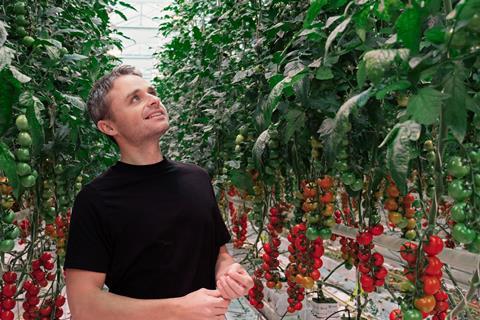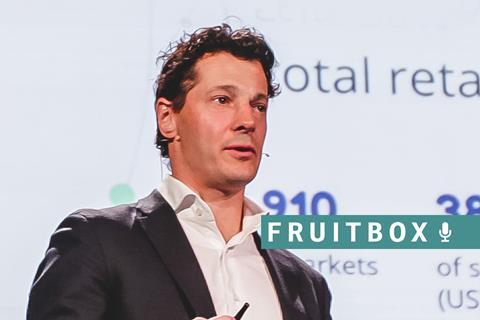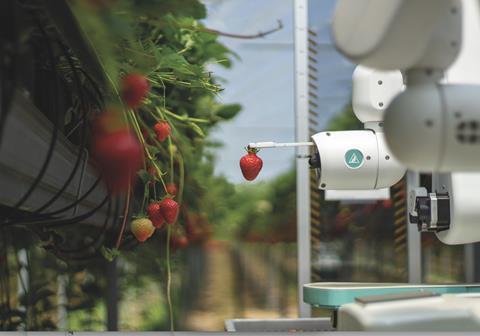Given the plethora of potential uses in the fresh produce sector, AI undoubtedly has the power to reshape the business, but its ability to create certainty for growers comes with a dose of unpredictability

AI is a broad field, but in recent years it has come to mean simply “LLMs”, or language learning models, as tools like ChatGPT have exploded in use for a variety of content creation tasks. The danger is that when the public recognises the enormous resources being drained by such general purpose tools, the overall reputation of AI may well suffer, with efforts to improve the efficiency and sustainability of food production using the technology ultimately harmed.
“We have to be very mindful of the energy usage of these new general purpose technologies,” says Rien Kamman, co-founder and CEO of Netherlands-based Source.ag. “But the energy being used specifically for agriculture is a negligible proportion, so I think the upside of using AI to improve food production is a no-brainer.”
Source.ag’s philosophy is to support growers – “almost like a co-pilot or a digital companion”, according to Kamman – with what is most influential to their financial success.
“We help the grower figure out, given their location, greenhouse and seed variety, how they can maximise yield while lowering the risk and reducing inputs,” he tells Fruitnet. “These are strategic decisions that, over the course of a season, greatly determine their results. Just like in a chess game, where the first two or three moves can influence the whole game – it’s the same for growing tomatoes, cucumbers and peppers.”
The company’s second goal is yield forecasting, ensuring growers are “not surprised by what comes out at the end”, leaving them with too much or too little produce. “There’s so much potential there,” says Kamman. “The facilities are high-tech, but a lot of the ways we grow food are still based on gut feeling and passed from father to son. That shouldn’t go away, but it needs to be complemented with systems that can supercharge these growers.”
Another Dutch company, Neolithics, has developed technology capable of scanning produce — such as avocados, pineapples or mangoes — at different stages of the supply chain, providing critical insights into the product’s quality and helping producers make better decisions on when to harvest, how to store and ripen, when to ship, and how to extract the greatest value based on an individual fruit’s quality.

“At Neolithics, we can actually see inside any fruit using a device that looks like an airport scanner,” says Kat. “It shows the dry matter distribution in an avocado, or the Brix in a pineapple, or even the starch distribution in a potato travelling on a conveyor belt in a factory just before it’s turned into fries. And if you have that kind of data, and if you collaborate with different sources, different players and different suppliers, it can actually tell you when to harvest, how to ripen, how to optimise your logistics.”
A crucial part of the needed transformation, Kat believes, lies in embracing data at every stage of the supply chain. “One of the elements that can really help this move is to have uniformity – a uniform understanding of the quality along our value chain,” he said. “So at the moment, if you have an avocado growing on a tree in Peru, that is an individual source of data. If you have an avocado lying in an Edeka store in Berlin, that is another source of data. In the current value chain, those two are not being connected.
“But in fact they are connected, because the dry matter in an avocado on a tree, the Brix of a mango that has just been harvested, the pesticide residue on a blueberry that’s on its way from Chile to Europe – all of that is data and data that can be connected.”
Labour concerns
The impact of AI on the job market is a complex one. Given labour shortages in the fresh produce sector, the automation of multiple tasks was always going to be welcome, not least in the areas of plant monitoring and harvesting.
Currently, the identification of insect species is carried out by human staff through costly and time-consuming field visits, according to Silvia Schmidt at the Laimburg Research Centre in South Tyrol, Italy. But with the help of high-resolution imaging in insect traps, as well as real-time monitoring, identification and counting of the species, a large amount of labour can be saved.
The trap emits an alarm when the insect species harmful to the plant is detected and recommends the timing for the use of chemical or biological pest control.
Such intelligent traps and the selective use of insecticides can help to minimise crop losses, reduce chemical residues in products, cut production costs, CO2 emissions and overall costs through pest control and prevention measures. “AI in agriculture is not just about increasing yields,” says Schmidt. “It’s about making agriculture more sustainable and efficient for future generations.”
Labour shortages for harvesting are also propelling the development of automated pickers. Dogtooth is a UK-based manufacturer of “dexterous harvesting robots”, says CEO Duncan Robertson. “These take care of harvest functions that have until now required the visual acuity and dexterity of the human hand,” he explains, “which is particularly relevant for berries like strawberries and raspberries.”

He believes an inflection point has been reached, as productivity of robots continuously improves, while human productivity remains static. “We can deliver a really compelling ROI story to customers,” says Robertson. “Robotic harvesting is going to have a really interesting knock-on effect for supply chains. There’s a lot we can do to reduce waste, improve quality and forecast yields.”
Planning ahead
The key is to allow companies to plan effectively, according to Daniel Than of New Zealand-based WayBeyond. “The erratic climate makes it hard for growers to plan things like irrigation,” he explains. “The answer is accurate, timely, accessible and comprehensive data.
“We provide all of this with our FarmRoad crop management software. We’ve come up with a solution that will predict the climate inside the greenhouse up to seven days in advance, using sensors, satellite data and AI. Our crop management solution encompasses climate, irrigation, pests and disease. Many industries are going through a digital transformation, and in agriculture we’re in the midst of it.”
“Decision makers are starting to realise that AI will not replace growers, but growers that use AI will outgrow those that do not,” resumes Kamman. “We’re mindful that there’s a responsibility for us to help growers effectively integrate these solutions into their day-to-day work, and that’s what we’re focusing on right now. We’ve invested a lot in research and development over the last two or three years, building these cutting edge AI systems for growers, but you have to be careful not to overload an industry with innovation.”
“I think the future is in getting a uniform-ish type of data that we can all share,” concludes Kat, “because then we will actually be able to leverage those insights using different kinds of technologies around that same fruit for a more consistent product, a satisfied customer and a healthier industry.”



